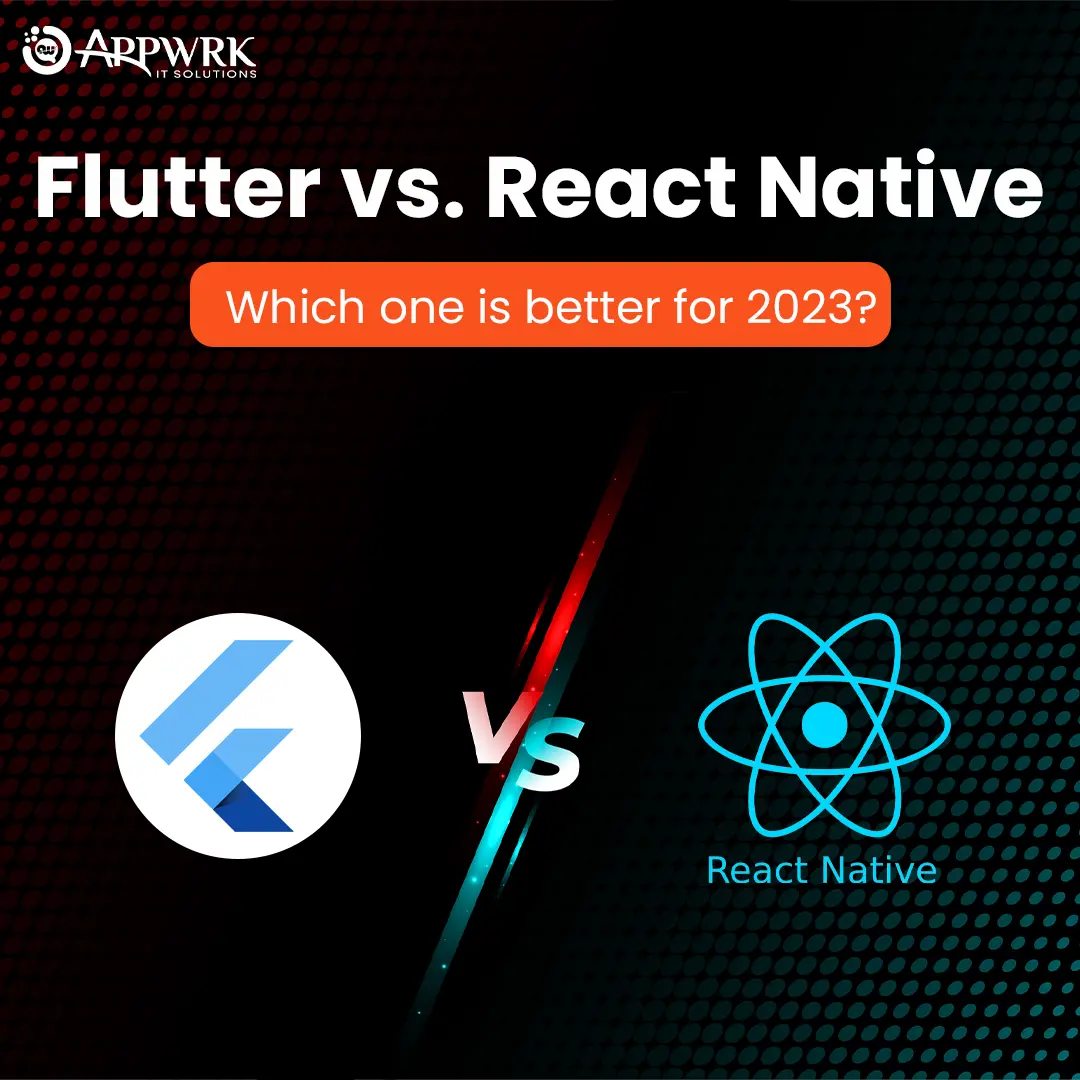Laravel vs React Native: A complete guide to making the best choice
In the 21st century, the IT industry has seen a significant boom. Various new technologies are being introduced daily to make computing easier by addressing fundamental coding problems. This article will deal with two of the most advanced frameworks in comparison, Laravel Vs React Native, and will provide an in-depth look at each framework’s features, pros, and cons to provide you with a clear picture and help you make the right choice.
Table of contents
- Market stats
- What is Laravel?
- How does it work?
- Features of Laravel
- Advantages of Laravel
- Disadvantages of Laravel
- What is React Native?
- How does it Work?
- Features of React Native
- Advantages of React Native
- Disadvantages of React Native
- Which one to choose among both?
- Conclusion
These two web frameworks ease the web development complexities by complying with many in-built features that reduce development time and result in a smooth transition from development to the production phase. Before getting into the intrinsic details, let’s understand the basics of the two frameworks better.
Market Statistics: Tabular Comparison
What is Laravel?
Laravel is a mobile development framework used to create custom web apps using PHP. It handles many things that are quite complex to build yourself, such as templating HTML, routing and authentication. This Framework uses existing components and other multiple frameworks that help to develop a more organized and pragmatic web application.
How does it work?
Laravel uses an MVC design pattern popularly known as Model-View-Controller. This architectural pattern breaks down an app into three fundamental parts:
- Data (Model)
- Interface to view and modify data (View)
- Operations to be performed on data (Controller)
Suppose a user requests to see their posts page, and the controller retrieves the information by talking to the model. The Laravel controller consists of most of the logic for your applications. Using the information, the controller constructs a “View”. The View provides the template with the help of which models are plugged into and displayed. This structure allows Laravel to power custom applications. The use of the Blade templating engine allows HTML to be broken into pieces and managed by the controller.

Features of Laravel
- Template engine
Laravel framework has garnered popularity for its built-in lightweight templates that can produce unique layouts by interactive content. It also provides a robust framework with a variety of widgets that incorporate CSS and JS code. Laravel templates are cleverly built to build basic yet sophisticated layouts with distinct components.
- MVC Architecture
Laravel supports MVC architecture patterns that enable distinction between business logic and layers of representation. This MVC architecture provides many in-built features enhancing application performance and improving both protection and usability.
- Security
Laravel framework makes no compromise when it comes to security as it provides robust protection for web applications. It employs a hashed and salted password method that ensures the password is never in plain text in the database. Furthermore, it generates an encrypted password using the “Bcrypt Hashing Algorithm.” Additionally, this PHP web development framework employs structured SQL statements to guard against SQL injection threats.
- Database migration
The Laravel migration system aims to widen the database structure of web applications without recreating it every time a code change occurs. The risk of data loss is quite low as a result of this function. This not only allows you to change the database’s structure, but it also allows you to utilize PHP instead of SQL code. The Laravel Schema Builder assists in the creation of database tables, as well as the quick addition of indices and columns. Moving forward in our quest to know about the best platform in Laravel vs React Native, let’s first determine the pros and cons of Laravel.
Advantages of Laravel
- Latest PHP features
One of the unique benefits developers can avail of from Laravel is that it consists of all the latest PHP features. If you’re considering giving Laravel a shot, know that you’ll be able to take advantage of some of PHP’s best features. Namespaces, overloading, anonymous functions, interfaces, and simpler array syntax are all included. Laravel developers can also use the Zttp Guzzle Wrapper package with the release of the newest version.
- Excellent Documentation
The detailed-oriented documentation makes the Laravel framework user friendly. Each Framework’s version has been released with proper documentation that features easy-to-understand descriptions regarding classes, approaches, and types of codes.
- Fast development cycle
One of the essential selling points for developers is a faster development cycle. With Laravel, you can avoid the entire development cycle because of quicker integrations. Moreover, if you get stuck somewhere, a vast Laravel user community can help you before even thinking of reaching out to Framework’s dedicated support. By reducing the entire development cycle period, you can save time and money and bring in more productivity.
- Dedicated Tool- Artisan
Laravel includes its command-line interface. Developers can use Artisan to create skeleton codes. It also manages the database system, removing the need for engineers to perform repetitive programming chores. Artisan is also helpful in creating and managing simple MVC files with their associated parameters.
- Reverse Routing
With this feature, you can create links within the structure to named routes. If you use the name of a specific router while creating the links, the system will apply the requested URL automatically.
- Integrated mail services
A sign of a good application reflects in providing up to date information to its users when it comes to new offers and deals alongside instant registration of new users. You may utilize SMTP, Mailgun, Mandrill, Amazon SES, Sendmail, and SparkPost drivers with Laravel to send emails using either local or cloud-based services.
Disadvantages of Laravel
- Lacks Inbuilt support
Being lightweight in nature, Laravel offers minimal inherent support compared to competing frameworks such as React Native and Drupal. However, with third-party solutions, you may quickly remedy this problem and get back on track.
- Problematic Updates
PHP platforms generally have many issues regarding versions with long term support, and Laravel, being a PHP platform, suffers due to this. Though updates may indeed cause minor problems, developers can eradicate them to a great extent with proper attention.
- Complex
There are a few complexities that could be addressed in Laravel. To begin, app development necessitates extensive documentation, implying that you must have some prior experience to begin developing an application. However, these first steps can be painless thanks to Laravel’s committed support and the extensive online developer community. Now coming to the competitor of Laravel, let’s discuss React Native in detail for a better perspective on Laravel vs React Native comparison.
What is React Native?
React Native is an open-source JavaScript toolkit that allows web developers to create native-looking apps quickly. The concept of React Native is relatively simple: you only have to code once, and you’re ready to go across several platforms (or Android, iOS, Windows).
How does it work?
React Native helps create applications consisting of JS code and Native by bridging an app and target platform. React Native’s bridge mechanism uses the React framework to transmit component hierarchy to the mobile device view when JavaScript executes alongside native code.

Features of React Native
- Webpack
This feature helps you pack all your native codes in a small file and allows React Native to link them together. Instead of creating multiple files when creating a native app, the webpage bundles everything together, saving a lot of time and money.
- Helpers
React Native provides several smaller components that can be used individually as well. With the help of this feature, delivered by React Native, you can perform everyday tasks such as logging in, checking value, creating a button, adding in the library, etc.
- Adaption
This feature enables React Native to take an existing HTML/XML script and convert it into native code, which proves very useful in developing native apps. If you’re working on an action user interface that looks and feels like an iPhone or Android app but is built in Java or C++, you can convert the Javascript to React Native’s JavaScript code.
- Flipper
React Native provides a devtool known as Flipper to debug apps. It leverages a simple desktop interface that helps to visualize, inspect and debug React Native apps either running on a simulator or connected to a physical device.
Note: For React Native versions <0.62 you need to first use Flipper and then add SDK to the application whereas in the higher version than 0.62, this is done automatically.
Advantages of React Native
- Community Support
React Native is a community-driven framework that allows developers to go through all the documentation concerning this technology. Developers are also encouraged to share their results and lessons learned, resulting in a truly collaborative experience for all parties involved.
- Optimal Performance
A platform is said to be truly effective when it enhances performance using native modules and controls. React Native functioning includes interaction with android and iOS components to generate codes to native APIs independent of any interference.
- Code reusability
One of the significant advantages React Native offers for the developer community is code reusability. This feature helps to reduce the time and expenditure of a project as it enables developers to freely access codes from pre-developed components in the open-source library.
- Simplified User Interface
Another significant benefit that React Native provides is a simplified and uncomplicated user interface. Instead of being a traditional framework, the Javascript library resembles an open-source framework. Developers can accomplish the correct sequence for generating apps with the help of this technology. React Native apps usually have a more responsive UI, a more seamless UX, and load faster.
- Modular Architecture
In the React Native app development process, modular architecture is derived from modular programming that ensures the separation of program functions into free and interchangeable blocks called modules. It paves the way for the application building process to be more adjustable as it helps developers use each other’s projects whenever required. Having the ability of swift app up-gradation, React Native developers can gain a lot from its intuitive modular architecture.
- Cost-effective solution
By providing the benefits of code reusability, React Native helps to reduce app creation cost to a large extent. As this Framework avoids writing separate codes for iOS and Android, you can code the app in an existing language. With a reduced workload, you require a comparatively small team of native developers for business development that ensures a sharp reduction in project time and cost.
Disadvantages of React Native
- Immature Framework
Since React Native is comparatively a new language than its counterparts, its lifecycle methods are not completely assessed, which can sometimes result in a negative or unpredictable impact on app functions. Here are some common problems:
- App developers need to update apps regularly as failure to update renders the app relatively ineffective.
- Along with writing existing code, developers face writing extra native code for components that are not in sync.
- Many times React Native components perform worse than their native counterparts, making it extremely difficult to implement complex lists.
- Less Secure
React Native being a Javascript library and an open-source platform combination, making it vulnerable in terms of security. Developers feel a low level of safety due to Javscirpt’s fragile nature. Especially when you are developing apps for banks and other financial institutions that require extra layers of security, you need to be more cautious. If ignored, malicious code snippets can pose a severe threat to app safety features.
- Poor Memory Management
Since React Native is based on JavaScript, it is not the right choice for computation-intensive apps. React Native affects performance and speed in these applications, and float computations are handled inefficiently, making memory management and consumption problematic.
Laravel Latest Updates
- Namespacing Routing Controllers
With this feature, you won’t have to face double prefix issues. The RouteServiceProvider had a property named namespace in previous versions of Laravel that was used to prefix the controllers in the routes files. This caused a problem when you tried to use a callable syntax on your controllers because Laravel doubly prefixed it for you. This attribute has been removed, so you can now import and use it without problems.
- Route Caching
Laravel uses route caching to save time by compiling your routes into a PHP array. Even if you have closures as actions in your routes in Laravel 8, you can use this feature. For increased performance, this should increase the use of route caching.
- Maintenance Mode
This mode is especially beneficial if you need to perform maintenance on your app and take it offline for your users while your engineers investigate faults. This will generate a secret cookie that will be given to anyone who reaches the proper endpoint, allowing them to utilize the application when it is in maintenance mode.
React Native Latest Updates
- Hermes for iOS
Hermes is an open-source JavaScript engine that has been optimised for use with React Native on various platforms. Hermes increases app speed by lowering memory usage, reducing app download size, and shortening the time for the program to become usable or interactive (TTI). Hermes was originally exclusively accessible as an opt-in for Android users. Hermes is now also accessible on iOS with this release.
- Defaulting Enabling of Inline Require
Inline requires is a Metro configuration alternative that can assist speed up the startup time of an app by deferring the execution of JavaScript modules until they are needed. This feature has been available as an opt-in configuration option for a few years. But, it is now enabled by default in React Native 0.64 to help you design fast-performing mobile apps without any further settings. Hermes with Proxy Support. Hermes now has proxy support in React Native 0.64. This functionality allows for compatibility with popular community projects like React Native Firebase and MobX. If you’ve been using these packages previously it is easy for you to migrate your project to Hermes.
Final Word
As we have discussed every element in this Laravel vs React Native article, we see each platform has its benefits and limitations. Both app development solutions offer unique approaches, features and as a result gaining significant popularity lately. Remember, a sound decision is evaluated on every parameter. So whether you are seeking the best Laravel app development company or the best React Native app development company, you must identify your requirements and compare them with both platform’s offerings to determine the best option for your business growth.
About The Author






 Free Quote
Free Quote
















































